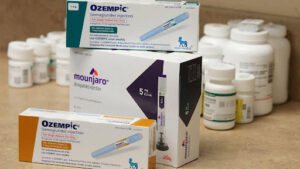With the rising popularity of weight loss and diabetes treatments, GLP-1 medications have gained widespread attention. But one common question remains: How much is GLP-1? Understanding the cost, what factors affect pricing, and whether there are more affordable alternatives is crucial before starting on this transformative therapy.
What Is GLP-1 and Why Is It So Popular?
GLP-1 (glucagon-like peptide-1) is a hormone naturally produced in the body that helps regulate blood sugar, appetite, and insulin production. Medications that mimic GLP-1—such as semaglutide and liraglutide—are used primarily to manage type 2 diabetes and support significant weight loss. These drugs work by slowing down digestion, increasing insulin secretion, and decreasing appetite, making them highly effective for metabolic control and long-term weight management.
The popularity of GLP-1 medications has soared in recent years, particularly as newer formulations like Ozempic and Wegovy have delivered impressive results in clinical trials. However, these benefits come at a price.
Average Cost of GLP-1 Medications
The price of GLP-1 medications varies significantly depending on brand, dosage, location, insurance coverage, and method of purchase (retail pharmacy vs. online provider). Here’s a general breakdown:
- Without insurance, GLP-1 medications can cost anywhere from $900 to $1,500 per month.
- With insurance, co-pays can range from $25 to several hundred dollars, depending on coverage.
- Online longevity clinics may offer access to compounded GLP-1 treatments at lower prices—often between $250 and $500 monthly, depending on the dosage and service.
These numbers reflect the out-of-pocket cost in the U.S. and may differ internationally. Services such as Longevity Direct aim to make GLP-1 treatments more accessible by offering customizable treatment plans.
What Affects the Price of GLP-1?
Several factors contribute to the cost of GLP-1 treatments:
- Brand vs. Compound: Brand-name drugs like Wegovy and Ozempic cost significantly more than compounded versions available through longevity clinics.
- Dosage & Frequency: Higher doses or more frequent use naturally lead to increased costs.
- Provider Type: Some clinics offer bundled services (consultation, support, prescriptions) which may justify a higher price.
- Insurance Coverage: Coverage varies widely and can significantly reduce or eliminate out-of-pocket expenses.
- Geographical Location: Prices fluctuate based on the region, local pharmacy pricing, and regulatory differences.
Are There Any Cheaper or Natural Alternatives?
For those who find the cost of GLP-1 medication prohibitive or are looking for other options, there are a few GLP-1 alternatives to consider:
- Lifestyle changes: Diet, exercise, and fasting protocols can naturally stimulate GLP-1 production.
- Other medications: Drugs like metformin or SGLT2 inhibitors may be more affordable and still effective in managing weight and blood sugar.
- Supplements: While less potent, some supplements claim to support GLP-1 activity through natural compounds.
It’s essential to consult with a healthcare provider before switching or supplementing treatments to ensure they align with your personal health goals.
Final Words: Is GLP-1 Worth the Investment?
While GLP-1 medications are not cheap, their potential to significantly improve metabolic health, aid in long-term weight management, and reduce the risk of diabetes complications can make them a worthwhile investment for many. Ultimately, the cost of GLP-1 treatment should be weighed against its benefits, your personal health goals, and what alternatives might be viable for you.
For those exploring both the price and potential options, visiting services like Longevity Direct can provide clarity on both how much is GLP-1 and what alternatives might fit your lifestyle or budget better.

